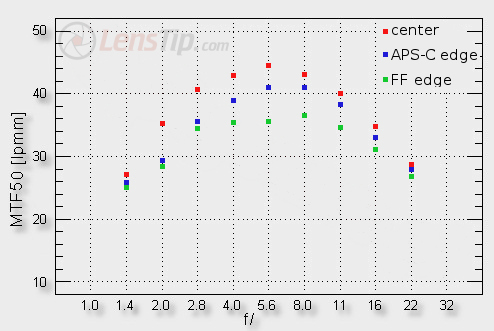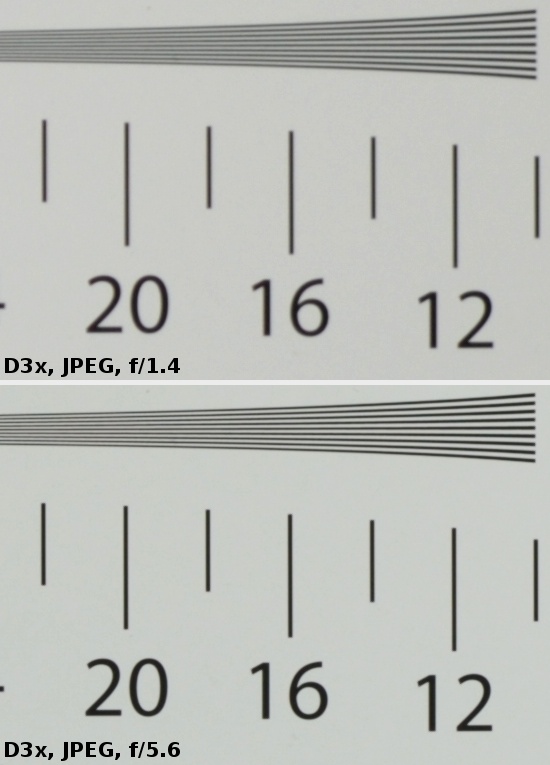Samyang 35 mm f/1.4 AS UMC
4. Image resolution
Let’s see how the Samyang performs in the frame centre (red squares), on the edge of the APS-C/DX sensor (blue squares) and on the edge of full frame (green squares) as well.

Please Support UsIf you enjoy our reviews and articles, and you want us to continue our work please, support our website by donating through PayPal. The funds are going to be used for paying our editorial team, renting servers, and equipping our testing studio; only that way we will be able to continue providing you interesting content for free. |
- - - - - - - - - - - - - - - - - - - - - - - - - - - - - - - - - - - - - - - - - - - - - - - -
You can notice immediately that by f/1.4 we can’t speak about full usefulness because the lens gets near 27 lpmm there. On slight stopping down the image becomes acceptable and by f/2.0 it is already of good quality – we reach the values of 35 lpmm there. What’s interesting these results are better than in the case of the Nikkor 1.4/35G, tested by us not so long ago or the Sony 1.4/35G. The Samyang was only worse than the Canon 35L, which could provide fully useful images already up from the maximum relative aperture.
When we stop down even further the Samyang starts to give us images of very good, even splendid quality. It doesn’t break any records, though, and in the f/2.8-f/8.0 aperture range it is a bit worse than its prestigious competitors, which results are truly record-breaking.
The performance of the tested lens on the frame's edge is interesting. Overall we get good or even very good results there – they don’t lag behind those we observed in the frame centre; on stopping down the aperture to ca. f/2.2 you can enjoy sharp images even on the full frame edge. The Nikkor and the Sony can only dream about similar results; even the Canon 35L didn’t fare better. A round of applause for the Samyang then!
At the end of this chapter we present some crops taken from the frame centre of our test chart photos; we used JPEG files saved along RAW files on which the analysis above was based.
 |






